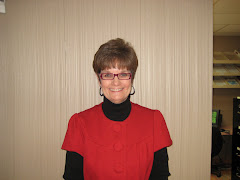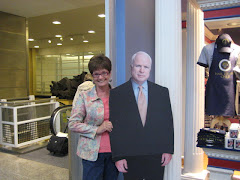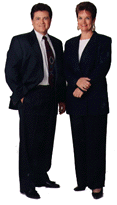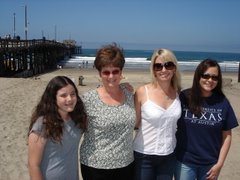It is probably true that on Oct. 12, 1492, Christopher Columbus discovered what we now call America.
But it was an America with no established borders, which means America essentially meant North America.
And North America also included Mexico, just as much as it meant what we now call the United States as well as Canada.
But focusing on Mexico, Columbus Day eventually became Dia de la Raza, the "Day of the Race." The arrival of Spaniards on that day in effect marked the beginning of the mestizos, the beginning of the mixing of blood, the beginning of Mexico.
Today, Spanish is the most common second language in the United States. I've read that there are more Spanish speakers in Los Angeles than in some South American countries.
And language is not the only area where Spanish makes a contribution. We see it particularly in Southwestern U.S. art and drama, and especially in religion.Ê
For 400 years, this area we call the El Paso Southwest, like all of Mexico, celebrated and reveled in the Spanish heritage. Our city -- outside of Spain -- for many years hosted the only Siglo de Oro theater festival in the world. Presenters arrived from Spain, South America, the United States, Mexico and Europe.
The El Paso Southwest was once over 80 percent Catho lic, and to a large extent, still is.
I have not heard the expression "Viva El Paso" in years, but even I recall when it was once a common expression in this community.
On both sides of the Rio Grande, the breeding and raising of horses, in particular, once played a major role in area settlement. The word caballero, generally interpreted in Spanish as "gentleman," actually takes on the connotation in Spanish for "horseman," the "ero"on the end pertaining to the horse.
The presently reviled Don Juan de Oñate, in 1598, held North America's first Thanksgiving in El Paso, the exact site depending on where one places the meandering, twisting Rio Grande at that time. And although some knew Oñate as a cruel man (and perhaps correctly), he brought with him a four-mile-long entourage of cattle, sheep, horses, dogs, etc., these being the real conquerors of the West.
Today, longhorn cattle are synonymous with Texas, but they came from Spain, and obtained their North American citizenship by wading and swimming the river with Oñate into our own back yard.
Those longhorn cattle, so synonymous with Texas, crossed the river "probably" near the present (but now closed) Hacienda Restaurant. And it was these horses, and these cattle, more than any other animal, that we today owe so much.
Descendants of these animals spread not only across Texas, but into New Mexico, Oklahoma, Kansas, Missouri and Arkansas. And primarily from these sprang some of the greatest horsemen on earth, particularly the Comanches.
All of us older folks recall seeing movies of Indian raids, these riders striking wagon trains, isolated travelers, and sometimes remote settlements. But their main quest was the stealing of livestock, particularly horses. Apaches and Comanches soon learned to ride as if they were born on horseback.
And we owe a lot to the Spanish-Mexican vaquero. He gave us the "horned saddle," ropes being wrapped around the horn, giving the cowboys more leverage in controlling cows.
Leon Metz, an El Paso historian, writes often for the El Paso Times. E-mail: cmetz48888@aol.com
Active Rain Real Estate Network

You can find great local El Paso, Texas real estate information on Localism.com Patti Olivas is a proud member of the ActiveRain Real Estate Network, a free online community to help real estate professionals grow their business.
Monday, March 17, 2008
Subscribe to:
Post Comments (Atom)











No comments:
Post a Comment